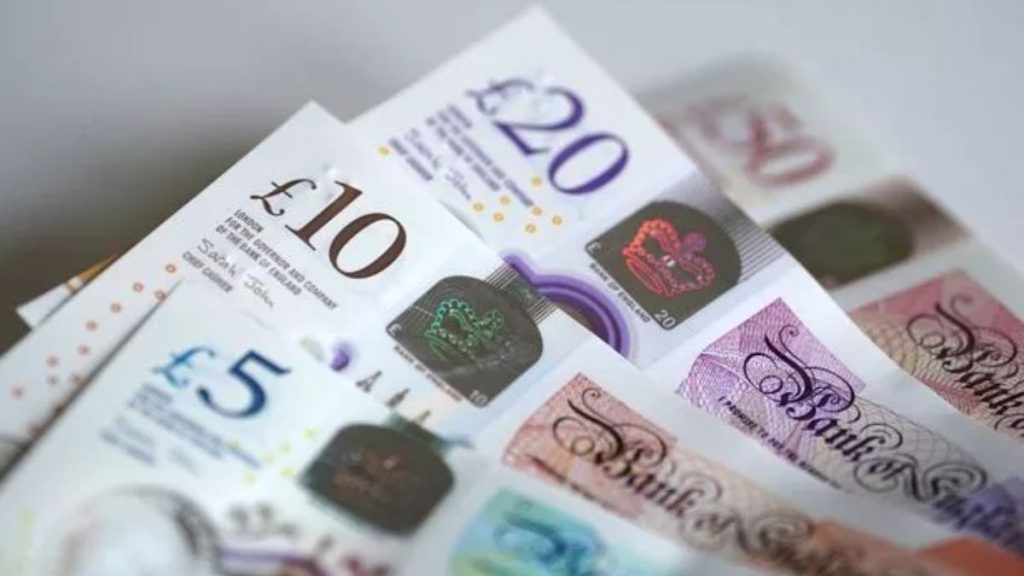The UK banking system is preparing for a major shift in 2025, with leading banks announcing new cash withdrawal limits that will affect millions of customers. These changes are being introduced to improve fraud prevention, cash management, and the transition to a digital-first economy.
While many people now rely on online and contactless transactions, the upcoming withdrawal caps are expected to impact pensioners, small business owners, and cash-dependent households the most. This report explains the new limits, why they’re being introduced, and how you can adapt to the new system.
Why UK Banks Are Imposing Cash Withdrawal Limits

The decision to set new withdrawal limits comes at a time when digital banking usage is at an all-time high. More customers are moving to contactless payments, mobile apps, and online transfers, reducing the reliance on physical cash.
Banks argue that this shift is necessary to:
- Prevent fraud and unauthorised transactions.
- Reduce theft risks from ATMs and cash branches.
- Encourage traceable, secure transactions.
- Lower operational costs of handling physical cash.
While this is in line with a global move toward digital payments, many traditional customers feel the change could disrupt daily routines, especially for those still dependent on cash for personal or business use.
What the New Withdrawal Limits Will Be in 2025
Starting from early 2025, most major banks in the UK will impose specific limits on how much cash customers can withdraw per day and per week. These limits will vary slightly depending on the bank and account type, but the general framework will look like this:
| Withdrawal Type | Expected Limit |
|---|---|
| Daily ATM Limit | £300–£500 |
| Daily In-Branch Limit | Around £1,000 |
| Weekly Cash Limit | £2,000–£3,000 |
Banks may adjust these figures depending on the customer’s account status, credit history, and security risk profile.
Who Will Be Affected Most by the New Cash Limits
The new limits are unlikely to affect digital-first users who rely on cards or mobile payments. However, they could pose challenges for groups who use cash frequently in daily life.
Groups likely to feel the impact include:
- Small business owners who pay suppliers or employees in cash.
- Pensioners and older adults who prefer managing money physically.
- Families who pay rent, childcare, or utilities in cash.
- Rural residents who have limited access to online banking or card facilities.
For these individuals, the new rules may require advance planning or multiple smaller withdrawals over several days.
How Banks Plan to Introduce the New Rules
Banks have confirmed that the new withdrawal caps will be implemented gradually throughout 2025, with advance notifications sent to all customers.
Here’s how the rollout will work:
- Notifications: Customers will receive letters, emails, or app alerts about their new limits.
- Account Adjustments: The limits will be automatically applied to all eligible accounts.
- Monitoring: Banks will track usage patterns and allow exceptions for special cases.
Some financial institutions will also permit temporary higher limits for emergencies, travel, or significant one-time purchases.
How These Changes Could Affect Daily Banking
For most people, everyday banking won’t change much—groceries, bills, and fuel payments can all be managed using debit cards or digital transfers. However, a few specific situations may become inconvenient under the new rules:
- Paying tradespeople or contractors who prefer cash.
- Organising local events or fundraisers that rely on cash donations.
- Domestic travel requiring cash payments in rural areas.
Such activities may now require better planning or advance cash scheduling to stay within the new withdrawal thresholds.
Why the Move Toward Digital Banking Is Accelerating
The new withdrawal policy is part of the UK’s broader financial digitisation strategy. According to banking industry analysts, over 85% of all UK transactions are now made electronically, and this number is rising every year.
Banks and regulators believe that:
- Digital payments are safer and harder to counterfeit.
- Mobile banking apps allow faster fraud detection.
- Cash handling costs are reduced for both banks and businesses.
The long-term goal is to make digital transactions the default method for most financial activity while still maintaining access to cash for those who need it.
How to Adapt to the 2025 Cash Withdrawal Limits
Transitioning to the new system doesn’t have to be difficult. With some smart planning and awareness, you can continue managing your finances smoothly.
1. Plan Withdrawals Early
If you need cash for big purchases or payments, plan several smaller withdrawals over a few days.
2. Use Digital Payment Options
Adopt debit cards, online transfers, or payment apps like PayPal or Revolut to avoid hitting daily limits.
3. Notify Your Bank for Exceptions
In emergencies, you can request a temporary increase in your withdrawal limit. Most banks approve such requests for verified purposes.
4. Combine Multiple Accounts
If you have multiple accounts, spread your withdrawals across them to manage larger cash needs.
5. Explore Prepaid or Business Cards
Prepaid cards can be loaded with cash and used freely without ATM limits, providing flexibility for businesses and families alike.
Security and Fraud Protection Benefits
While some may view the new rules as restrictive, they come with strong security advantages.
- Reduced theft risk: Carrying smaller amounts of cash makes individuals less vulnerable to robbery.
- Enhanced fraud tracking: Banks can identify and freeze suspicious transactions faster.
- Better record-keeping: Cash movements are easier to audit, reducing the chance of money laundering.
Overall, the move is expected to make banking safer, more transparent, and more accountable for customers and institutions alike.
How Banks Are Responding to Customer Concerns
Recognising the potential inconvenience for some users, banks have announced support measures to help customers adjust.
These include:
- Allowing temporary higher limits for verified requests.
- Offering extended branch hours during the transition phase.
- Providing digital banking tutorials for older or rural customers.
- Maintaining in-person cash services through local branches and post offices.
Such initiatives are designed to make the rollout smoother and reduce confusion among less tech-savvy clients.
Impact on Rural and Cash-Dependent Communities
A key concern surrounding the new withdrawal limits is the effect on rural communities that still depend heavily on cash. In areas with limited internet connectivity or card payment options, digital banking isn’t always practical.
In response, many banks are:
- Deploying mobile banking vans to serve remote towns.
- Expanding partnerships with local post offices to offer cash services.
- Maintaining essential branches in rural districts despite closures elsewhere.
Still, rural residents are being encouraged to plan ahead and adopt at least some form of digital payment system to reduce disruptions.
Preparing for the 2025 Banking Transition
The upcoming year will be crucial for both banks and customers. To stay ready for the new withdrawal rules, you should:
- Review your account terms to understand your current withdrawal limits.
- Estimate your monthly cash usage and identify potential challenges.
- Set up mobile or online banking if you haven’t already.
- Ask your bank about temporary exemptions or higher withdrawal options.
- Stay updated with announcements from your bank and the Financial Conduct Authority (FCA).
Preparation now will ensure that the transition to the 2025 framework is smooth and stress-free.
Future of Banking: The Digital-First Direction
The introduction of withdrawal limits marks a significant turning point in UK banking. Analysts predict that by 2030:
- Cash use will fall below 5% of all UK transactions.
- Contactless payments will become the primary method for daily spending.
- Bank branches will evolve into advice and service hubs rather than cash-handling points.
- Digital wallets and mobile apps will dominate personal finance management.
Adapting to these changes early gives customers greater flexibility and safety in an increasingly cashless economy.
Frequently Asked Questions (FAQs)
Q1. When will the new cash withdrawal limits take effect?
Most UK banks will begin implementing the new limits in early 2025, with full rollout expected by mid-year.
Q2. What are the new daily withdrawal limits?
The typical daily ATM limit will be £300 to £500, while in-branch withdrawals will be capped around £1,000. Weekly caps may range from £2,000 to £3,000.
Q3. Can I request a higher limit for emergencies?
Yes. Banks will allow temporary limit increases for special cases such as travel, medical expenses, or large purchases.
Q4. Will rural customers still have access to cash?
Yes. Banks are working with post offices and mobile banking units to ensure cash availability in rural and remote areas.
Q5. How can I avoid hitting the new withdrawal limit?
Use digital payments, plan cash withdrawals in advance, or request temporary increases through your bank’s online platform.



















